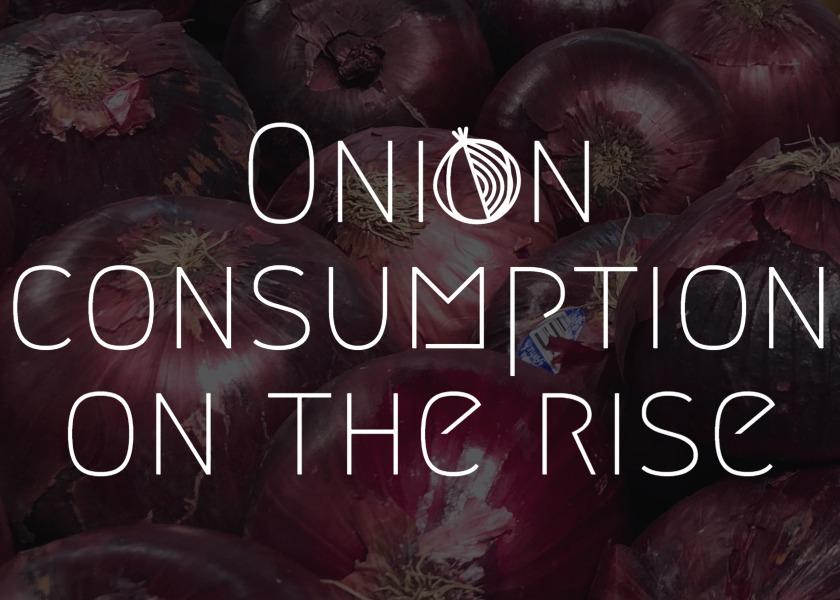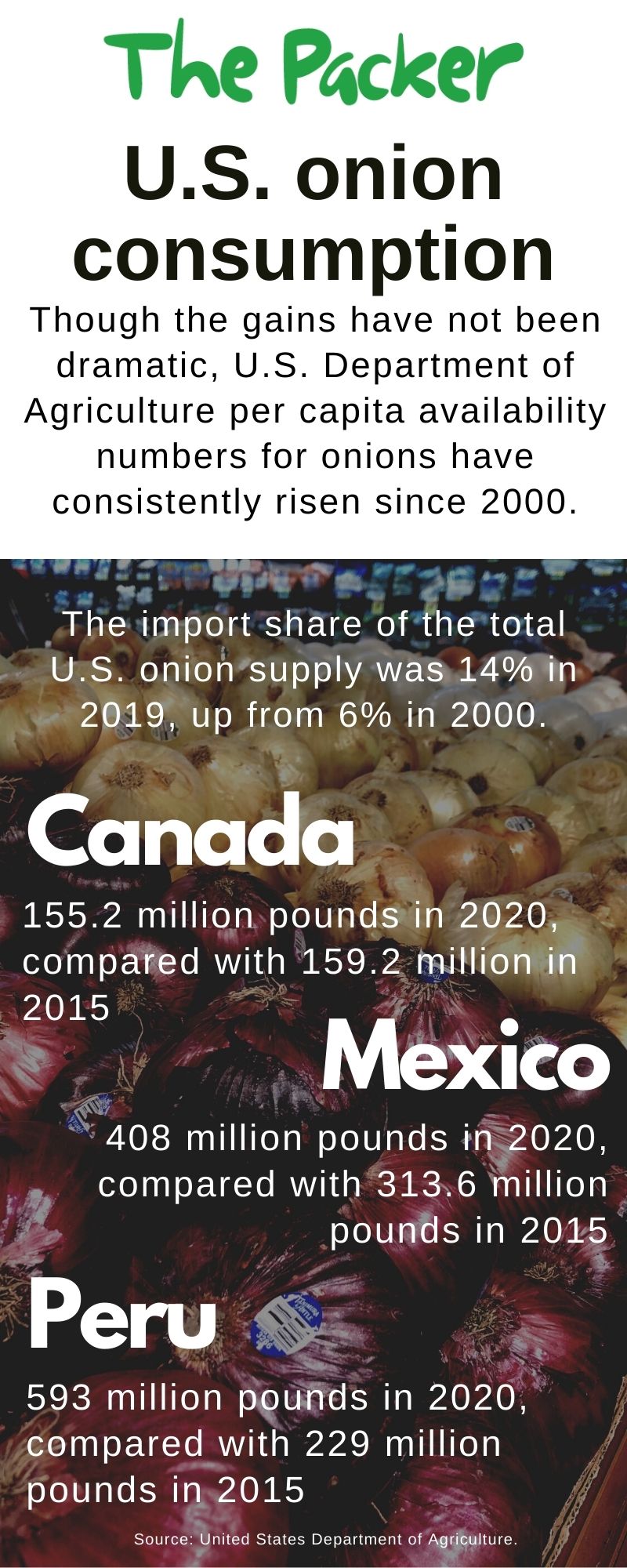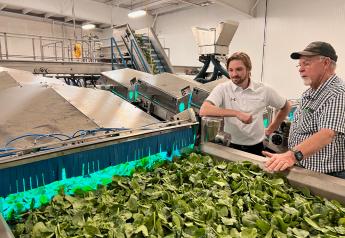Onion consumption on the rise

U.S. onion consumption has moved higher over the past two decades.
Though the gains have not been dramatic, U.S. Department of Agriculture per capita availability numbers for onions have consistently risen since 2000.
The USDA’s per capita retail availability for fresh onions (edible weight) has increased from 14.4 pounds in 2000 to 16.2 pounds in 2019. Per capita retail availability of onions reached 19.8 pounds in 2017, according to USDA statistics, before falling to 16.2 pounds for both 2018 and 2019.
The import share of the total U.S. onion supply was 14% in 2019, up from 6% in 2000, according to the USDA.
Here is a comparison of onion truck shipments from U.S. sources in 2020, compared with 2015 and 2010.
- Arizona: 19.1 million pounds, compared with 29.1 million pounds in 2015 and 24.7 million pounds in 2010;
- Central California: 339.1 million pounds, compared with 304.8 million pounds in 2015 and 328.9 million pounds in 2010;
- California Imperial Valley: 144.9 million pounds in 2020, compared with 119.1 million pounds in 2015 and 91.6 million pounds in 2010;
- California South: 16.1 million pounds in 2020, compared with 110.5 million pounds in 2015 and 113.1 million pounds in 2010;
- Colorado: 106.4 million pounds in 2020, compared with 159.6 million pounds in 2015 and 248.2 million pounds in 2010;
- Georgia: 180.1 million pounds in 2020, compared with 166.8 million pounds in 2015 and 181.9 million pounds in 2010;
- Idaho: 690.2 million pounds in 2020, compared with 478.7 million pounds in 2015 and 368.4 million pounds in 2010;
- Michigan: 47.9 million pounds, compared with 67.4 million pounds in 2015 and 65.2 million pounds in 2010;
- New Mexico: 415.3 million pounds, compared with 379.9 million pounds in 2015 and 319.5 million pounds in 2010;
- New York: 154.8 million pounds in 2020, compared with 236.2 million pounds in 2015 and 180.5 million in 2010;
- Oregon: 526.3 million pounds in 2020, compared with 644 million pounds in 2015 and 502.5 million in 2010;
- Texas: 299.7 million pounds in 2020, compared with 65 million pounds in 2015 and 273.5 million pounds in 2010;
- Utah: 74.1 million pounds in 2020, compared with 74.9 million pounds in 2015 and 59.5 million pounds in 2010;
- Washington: 1.11 billion pounds in 2020, compared with 775.9 million pounds in 2015 and 645.4 million pounds in 2010; and
- Wisconsin: 57.6 million pounds in 2020, compared with 44 million pounds in 2015 and 41.3 million pounds in 2010.








